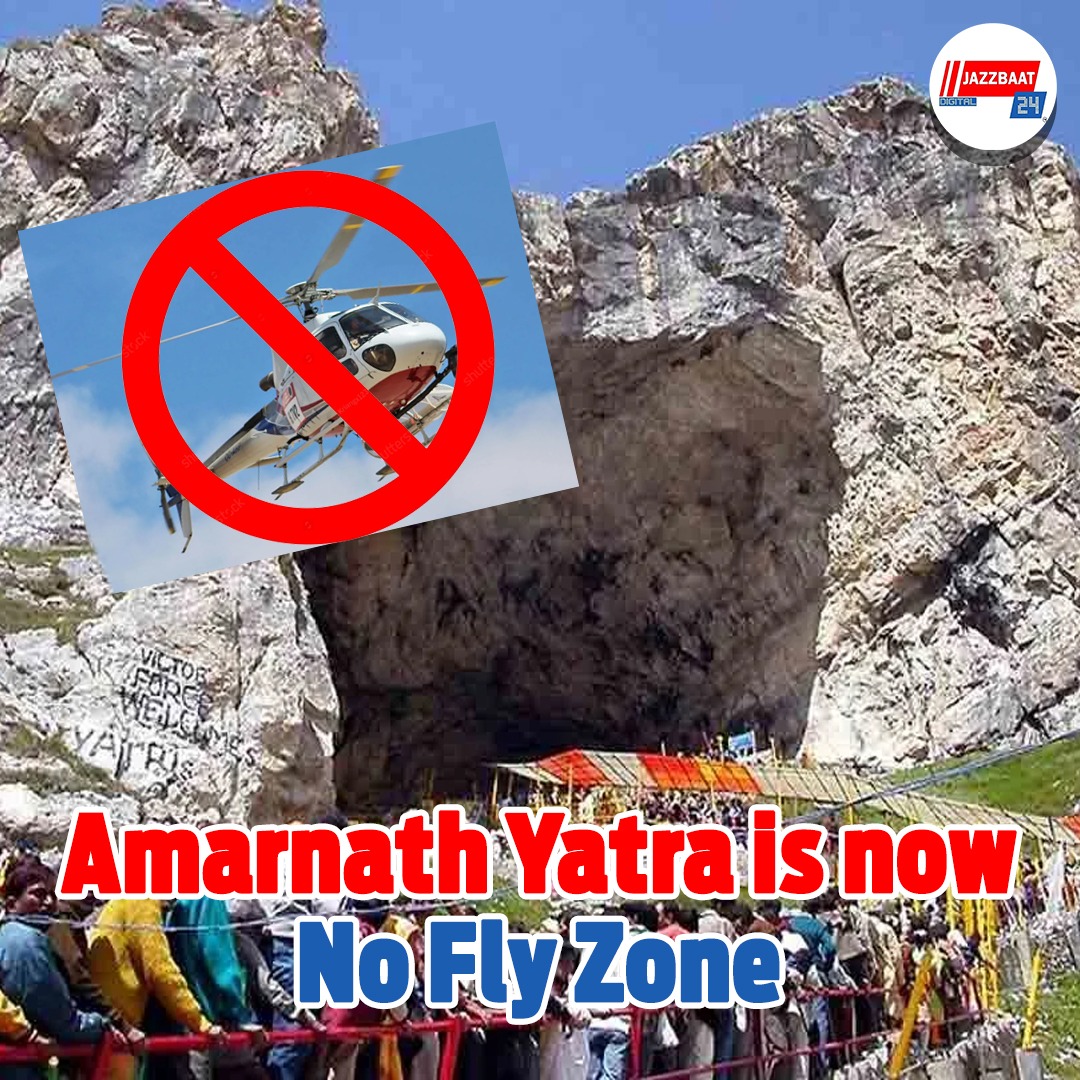
Srinagar, June 18, 2025:
From July 1 to August 10, 2025, the government of Jammu and Kashmir has designated the pilgrimage routes to the shrine of Shri Amarnath as a "no flying zone," prohibiting the use of any kind of aircraft, including balloons and drones. After a terror attack near Pahalgam in April, this unprecedented restriction is intended to strengthen security.
With simultaneous departures along the Pahalgam track in Anantnag and the Baltal track in Ganderbal, the annual yatra is set to start on July 3 and end on August 9. The decision was made by the shrine board and administration in response to growing safety concerns, especially after militants killed over two dozen people, including a pony rider, in April when they attacked tourist groups.
This year, there will be no helicopter service for pilgrims due to the new directive, which signifies a major change in logistical planning. To further enforce the no fly policy, the aerial ban also covers surveillance drones and any other unmanned aerial devices along the Yatra corridor. On the ground, security forces are putting up a thorough effort.
According to reports, anti sabotage teams, canine units, bomb disposal squads, and a record 30,000 CRPF and other force personnel are being deployed along the routes by the Northern Command and Jammu and Kashmir Police as part of Operation Shiva to ensure safety.
“Given the prevailing threat, it was imperative to remove any aerial vulnerabilities,” a Shrine Board official explained. To keep pilgrims safe, the government is also strengthening route surveillance and putting drone detection systems into place. Authorities in charge of pilgrimages are preparing with improved facilities.
At strategic points along both routes, RFID cards, on site registration centers in Katra and Srinagar, expanded lodging, medical assistance, and weather forecasting facilities are being prepared. SOPs have been prepared to improve emergency response, and disaster prone areas have been identified and marked. As of May, more than 350,000 pilgrims had signed up for the 2025 yatra, indicating a high turnout in spite of stricter regulations.
For the duration of the yatra, pilgrims should rely on ground transportation and trekking arrangements, the chair of the Shrine Board stated, and be ready for the lack of helicopter services. Teams from the Border Roads Organization are still working on access track maintenance.
In order to react quickly in the event of an emergency, the military and civilian agencies will continue to have an integrated command structure. One of the strictest security regimes in the Amarnath Yatra's history is represented by the combined measures. Authorities stress that in order to guarantee the pilgrimage goes safely, the aerial security ban, strong ground deployment, and improved facilities are crucial.